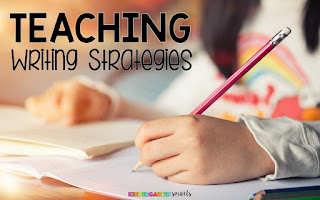Writing as a skill include all the knowledge and abilities related to expressing ideas, expressing who we are, a means of explaining our ideas to ourselves and other readers while at the same time preserving our personal experience and memories through written words.
Writing is an important skill that all students should acquire before leaving school.
How can we as teachers, help students perfect their writing skills? In our class discussion this week, we looked at the different types of writing strategies which can be employed or introduce in the classrooms. These strategies are effective in helping students improve on their writing skills once used properly. Listed below are a few strategies that were looked at in class.
- Elaborating: Writers expand their written piece by adding vivid details (Brainstorm ideas
- Evaluating: This includes reviewing and evaluating their work and judge how the goal set was met ( Use rubrics)
- Formatting: Designing the layout of their final piece( Decide on title, make final copies.
- Generating: Writers collect words, sentences and ideas by using background knowledge or resources found in the classroom ( Draw picture or make list research the information needed)
- Monitoring: monitor their progress and coordination of the writing strategies ( Reread rough draft, ask self-questions)
- Narrowing: Writers limit their topic to make the specific and manageable ( Use the five W questions).
- Organization: Grouping sequences and prioritize ideas for their written pieces ( Create graphic organizers and make an outline).
- Proofreading: Writers should reread their work to identify errors in spelling and other writing mechanics( Proofread with a classmates).
- Questioning: Ask themselves questions as they develop their composition piece (conduct a question- answer conversation with themselves).
- Rereading: Review their work to check if the ideas are flowing ( Reread all of rough drafts)
- Revising: Words or sentences are added or deleted to communicate the text effectively (use a blue pen to help revise).
- Setting Goals: Set action oriented goals to direct their writing ( make a list of goals)
I have listed the twelve effective strategies and activities for each in brackets that teachers can used in their classrooms. Looking at these strategies it clear that they can under the heading as the writing process (prewriting, drafting, revising, editing and publishing) and should be taught in stages, so students will not become overwhelmed.
I love these strategies because it simplify and demystified the art of writing. I know teachers find that teaching composition is a tedious job ( I am guilty of that), but if we put into practice using these strategies then teaching and learning composition can be fun for both teachers and students.
What I would love to see when I return to the classroom setting, is children and students having fun while learning the art of writing properly. I think that when students find something enjoyable then they will always want to do it.


I agree with you, writing is an important skill that all students should require. Those strategies mention can be very effective in guiding the students to become better writers.
ReplyDeleteGreat point you made on the strategies helping to simplify and demystify the art of writing. Implementing these strategies would make the teaching and learning to write much more manageable and more enjoyable for all teachers and students.
ReplyDelete